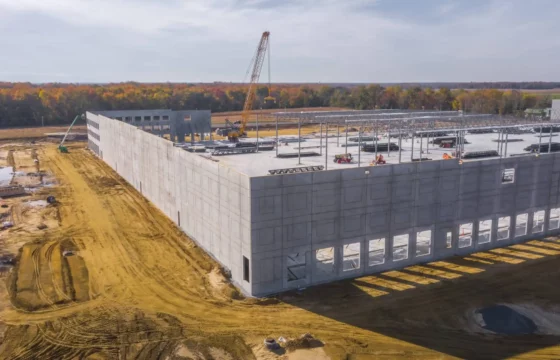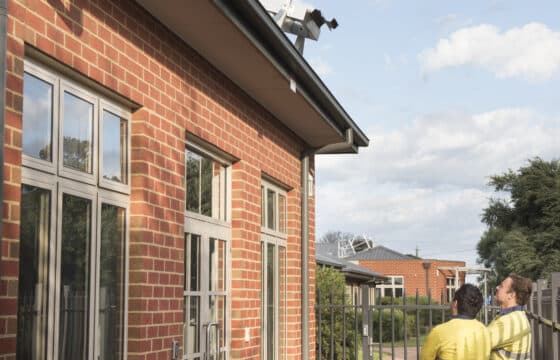Strategies to improve food manufacturing plant height safety and compliance
Food manufacturing remains one of the biggest industries in Australia. Producing enough food to feed 80 million people every year, our food industry is estimated to be worth $87 billion (AUD). Sadly this industry also comes with one of the highest workplace injuries and deaths, and remains the fourth most hazardous place to work.
In such a hazardous environment, the key to reducing plant risk also includes an area often overlooked: food safety. Whether it’s using metal equipment tags to minimise contamination risk, only using stainless steel portable ladders, or adopting cool room solutions designed to avoid penetrations compromising your external room walls. Taking practical steps in your approach to height safety and compliance can have a big impact on your risk management program.
After working with a number of the biggest food manufacturers in Australia such as Bega, Fonterra, & Coca-Cola, our expert height safety team have defined five strategies you can apply to reduce risk at your food manufacturing plant:
- Regularly inspect and recertify your equipment
- Keep up-to-date records and asset registers
- Choose the right equipment for the job
- Work with experts that know your industry
- Conduct regular risk assessments as part of your food safety program
(1) Regularly inspect and recertify your equipment
Certification of your equipment doesn’t last forever, and your equipment can become unsafe faster than you might expect. This could be caused by environmental factors such as where and how they are stored or driven by how they are used and potentially misused by workers.
From ladders and personal protective equipment to platforms and guardrails, your height safety equipment and solutions should be regularly checked and certified to ensure they’re safe and compliant. However, it’s important to note different equipment has different compliance inspection and certification intervals, based on usage, certification and environment.
“While fixed ladders should be inspected at least annually, for example, your portable ladders need to be inspected every six months,” said height safety expert Aaron Carratello.
“Keeping up to date with inspections and maintenance schedules means your equipment is ready when and where you need it. This ensures you can access an area quickly (and safely), helping you avoid costly downtime.”
“If you’re unsure, our height safety team can guide you to the right inspection and certification schedule for each height safety system on site. We can also collate inspection and compliance information into our online client portal, setting up automated reminders for upcoming height safety and compliance tasks.”

(2) Keep up-to-date records and asset registers
One of the biggest dangers for your food manufacturing site is not keeping your records up to date. In fact, poor equipment maintenance is often one of the leading causes of injuries and accidents in food related workplaces.
Regular reviews of your asset register not only ensures you can keep on top of maintenance schedules, it also ensures you know what you have on site, where it is located, as well as what is safe for use at all times. Food safety program guidelines also require up to date records and copies of actions demonstrating program compliance.
“We’ve been called to inspect a ‘dozen ladders’, only to find up to 300 portable and fixed ladders on site,” said height safety expert Andre Fernandes.
“Not knowing what you have on site – and where – could be putting your plant at risk. That’s why we collate and update all equipment details on a cloud-based and hard copy asset register for all our clients, providing QR code ID tagging for each piece of equipment on site.”
When QR tagging equipment for your registry, it is also important to ensure all tags are metal to minimise the risk of contamination if a tag falls while in use. This allows any tag pieces to be picked up through metal detection check points.
(3) Choose the right equipment for the job
With heavy cleaning and sanitation standards to ensure food safety, you need height safety equipment that can withstand your industry requirements.
While aluminium is a popular material for a lot of ladders and height safety systems, stainless steel is better suited for the food manufacturing industry and is an industry standard.
“That day-to-day aluminum ladder used around your building for general maintenance can’t be used within the manufacturing areas,” said Aaron Carratello.
Cool rooms also often require custom height safety designs to meet required standards and ensure the space is not compromised. This could be designing a height safety solution that ensures the exterior is not penetrated or a custom ladder to ensure height safety can be maintained in the minimal floor space available.
“When purchasing new height safety equipment and solutions, it’s important to talk to an industry before installation to avoid costly design or installation mistakes that could cause non-compliance.”
As well as purchasing advice and support, our engineering team can design a height safety system to meet restricted space requirements you may need.

(4) Work with experts that know your industry
The food manufacturing industry has strict standards and requirements, both here in Australia and internationally.
Most food manufacturers in Australia need to have a food safety program in place that not only incorporates the HACCP system and guidelines but also standard 3.2.1. of the Food Standards Code. That’s why it’s essential to work with height safety experts who understand the requirements, regulations and standards of your industry.
“If your height safety team does not have experience in your sector, you could be putting your company and workers at risk,” said Aaron Carratello.
“For example, your cool room might have restricted clearance height areas and meeting Australian height safety standards might not be possible. If you’re not working with someone who knows how to handle that situation, you might be in trouble come your next audit.”
“Working in the industry for many years – and with several of the largest food production companies in Australia – we’ve seen it all. By engaging with our team up front, we can guide you to the right height safety solution for your application and provide height safety insight to keep you compliant.”
(5) Conduct regular risk assessments as part of your food safety program
With a large focus on risk management, your food safety program (FSP) needs to not only identify hazards but demonstrate how they are being monitored, corrected and documented.
By incorporating risk assessments and height safety inspections into your annual FSP review, you can ensure you have the right records and documentation in place to remain compliant. It will also help you update your hazard monitoring process and procedures, identifying risks on a regular basis.
“HACCP is an internationally recognised standard used to identify and manage risk, and is a big part of most FSPs,” said Andre Fernandes.
“With our risk assessments including a detailed report – all referenced against your internal risk controls as well as the hierarchy of controls – you can easily incorporate up to date information into your FSP.”
“As well as identifying hazards and risks, regular risk assessments will ensure regular testing and tagging. In turn, keeping your asset registry up to date with all the information you need for audits and routine maintenance.”
Do you have what you need to stay compliant?
Chat to our expert team about your preventative maintenance schedule and compliance needs. Together we can define a program that best supports your requirements.

